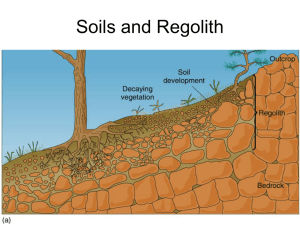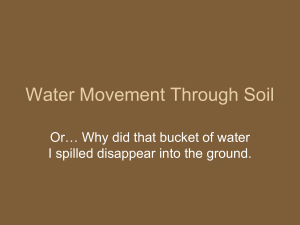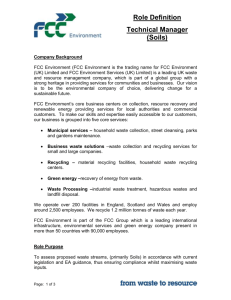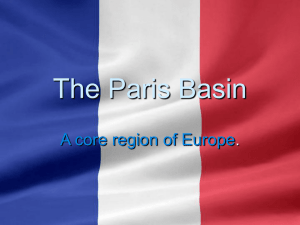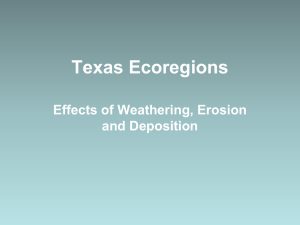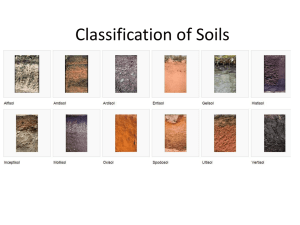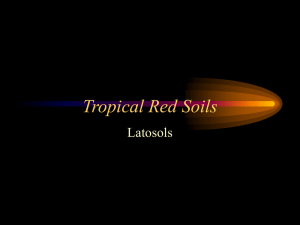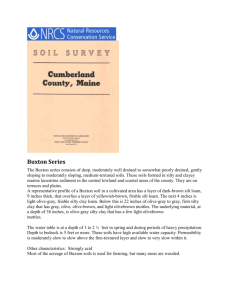Soil Profiles
advertisement
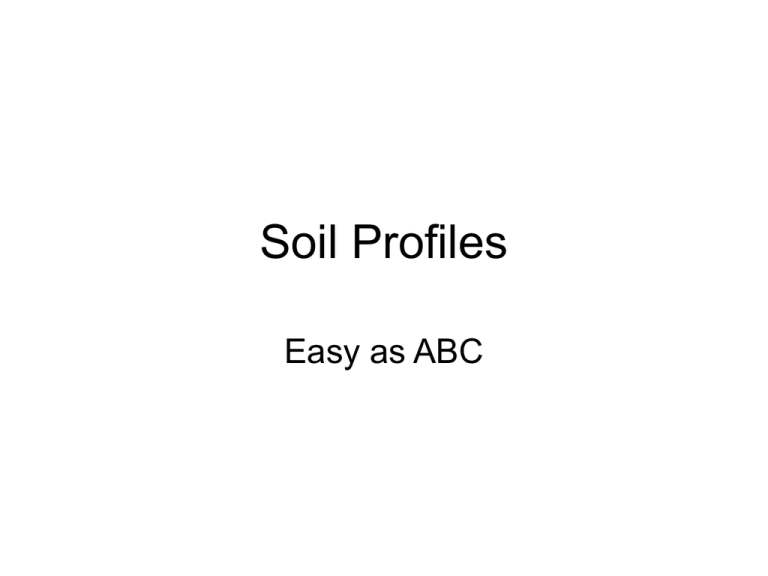
Soil Profiles Easy as ABC Soil Profile Organic layer (absent in farmed soils Topsoil Subsoil Parent material Usually darker because of organic matter (humus) Redder color, distinctly different structure than “A” Weathered material usually related to the above layers The Demopolis series consists of shallow, well drained, very slowly permeable soils that formed in materials weathered from chalk and soft limestone. These soils are on ridgetops and side slopes in uplands The Hannon series consists of very deep, moderately well drained, very slowly permeable soils that formed in clayey sediments overlying stratified loamy and clayey materials and chalk. These soils are on ridgetops and side slopes on uplands of the Alabama, Mississippi, and Arkansas Blackland Prairie and Southern Coast. The Houlka series consists of deep, somewhat poorly drained, very slowly permeable soils formed in clayey alluvium. These are nearly level soils on flood plains . The Houston series consists of moderately well drained, slowly permeable, cyclic soils that formed in alkaline clays and chalk of the Blackland Prairies. The Ailey series consists of soils that are deep or very deep to a dense layer. These well drained, slowly permeable soils formed in sandy and loamy marine sediments on uplands, mostly in the upper Coastal Plain The Cecil series consists of very deep, well drained moderately permeable soils on ridges and side slopes of the Piedmont uplands. These soils are deep to saprolite and very deep to bedrock. The Hartsells series consists of moderately deep, well drained, moderately permeable soils The Kureb series consists of very deep, excessively drained, gently sloping to moderately steep soils on Coastal Plain uplands and on side slopes along streams and bays Soil Depth Depth refers to how deep plant roots can extend into the soil until they are stopped by barriers such as rock, sand, gravel, compacted clay, or cement. In other words the “A” and “B” Horizons added together make up depth If you encounter a barrier within a few inches of the surface layer, then the soil is very shallow. 12 inches are shallow Soils from 12-24 are moderately deep Deep soils range from 36-60 inches. Very deep soils are more than 60 inches (5 feet) Moderately Deep Deep Very Deep Very Deep Shallow Other questions they may ask Average depth in inches of a particular layer Color of a layer and what that color means Soil forming processes Gains aka additions Solids transported by wind or water Plant or animal remains bacterias Removal aka. Losses or deletions Removal includes losses by: Wind erosion Water erosion Uptake of nutrients by plants Mixing aka transactions Mixing can be by: Soil animals Gravity Shrinking/swelling due to water content Freezing and thawing Translocation Movement up or down through the horizons by nutrients, and compounds catching a ride on water Transformations Soil components are transformed by chemical and biological reactions Decomposition of organic compounds Soils with a different color than their parent material show that the surface layer was formed through transformations.

